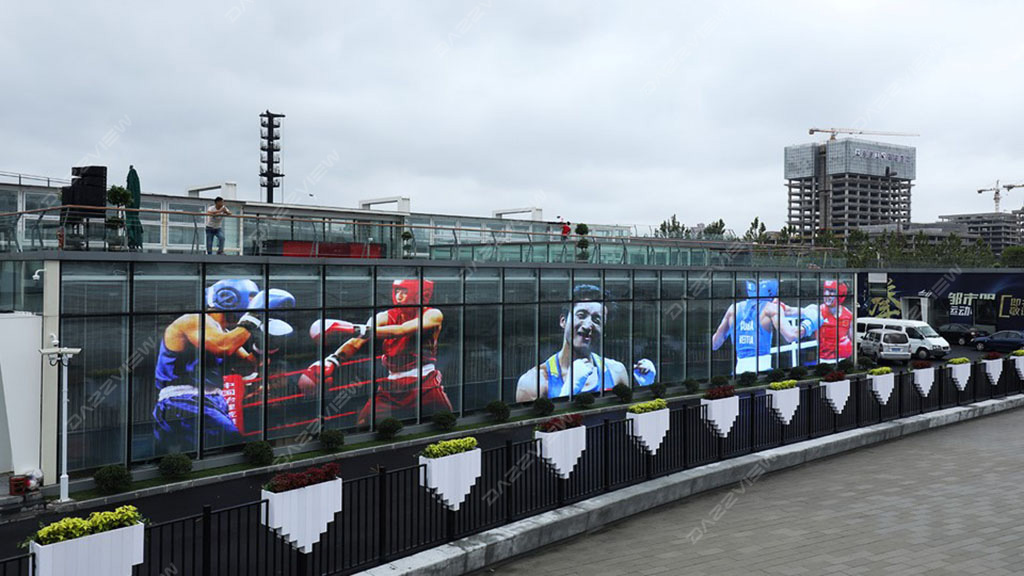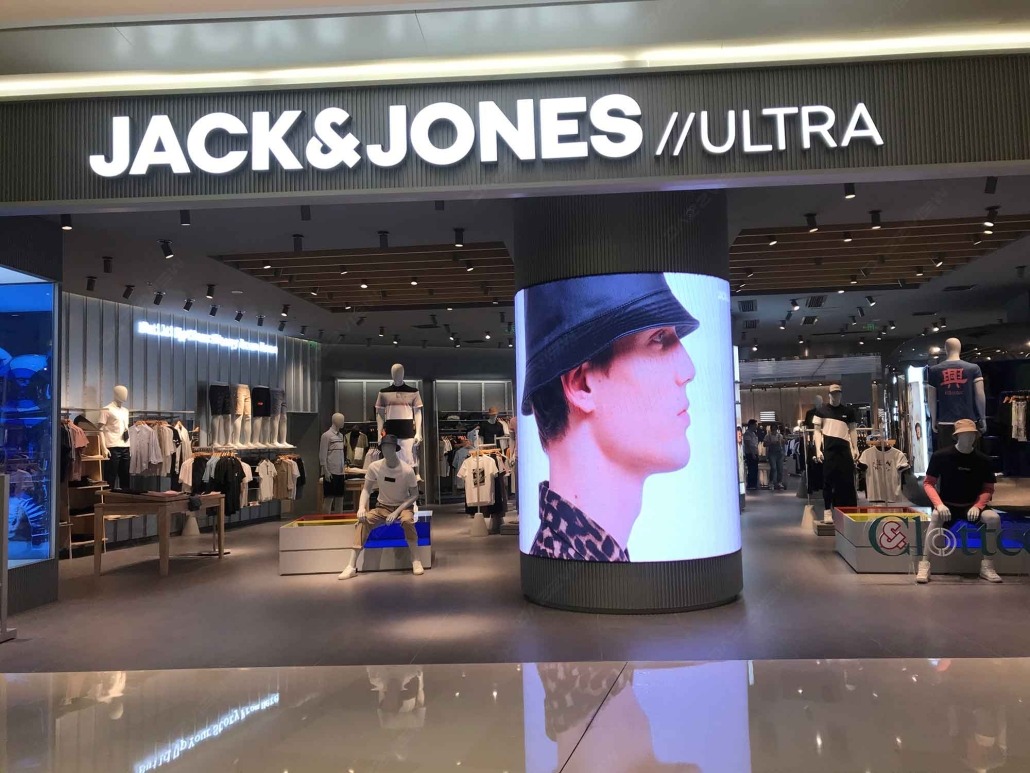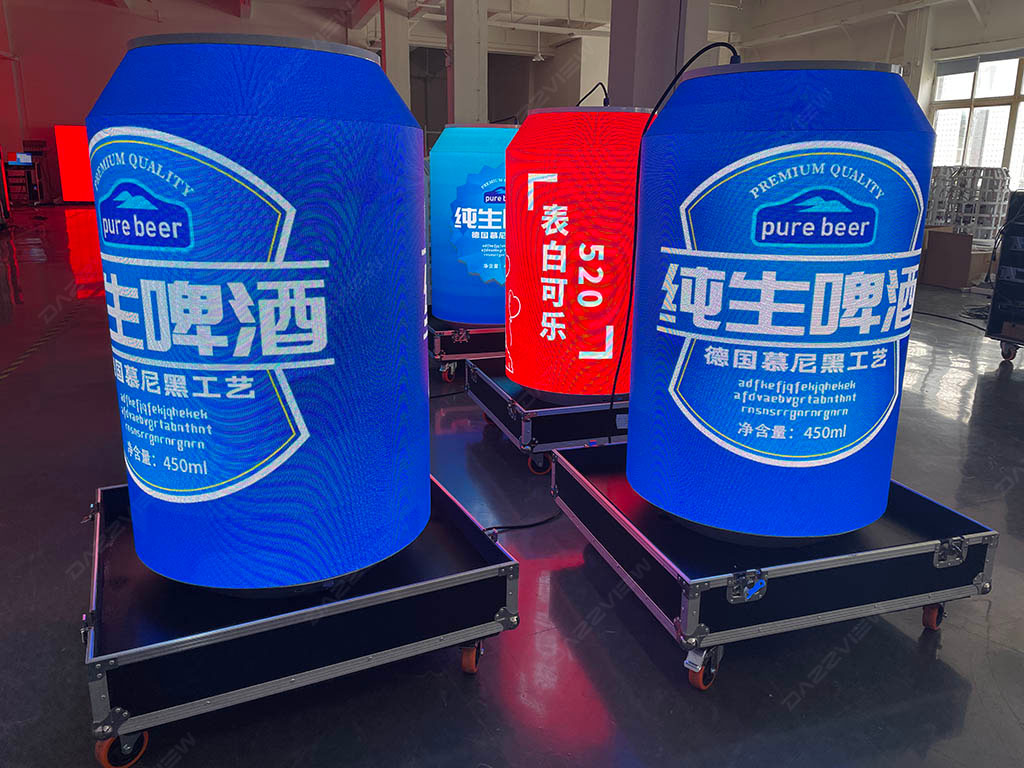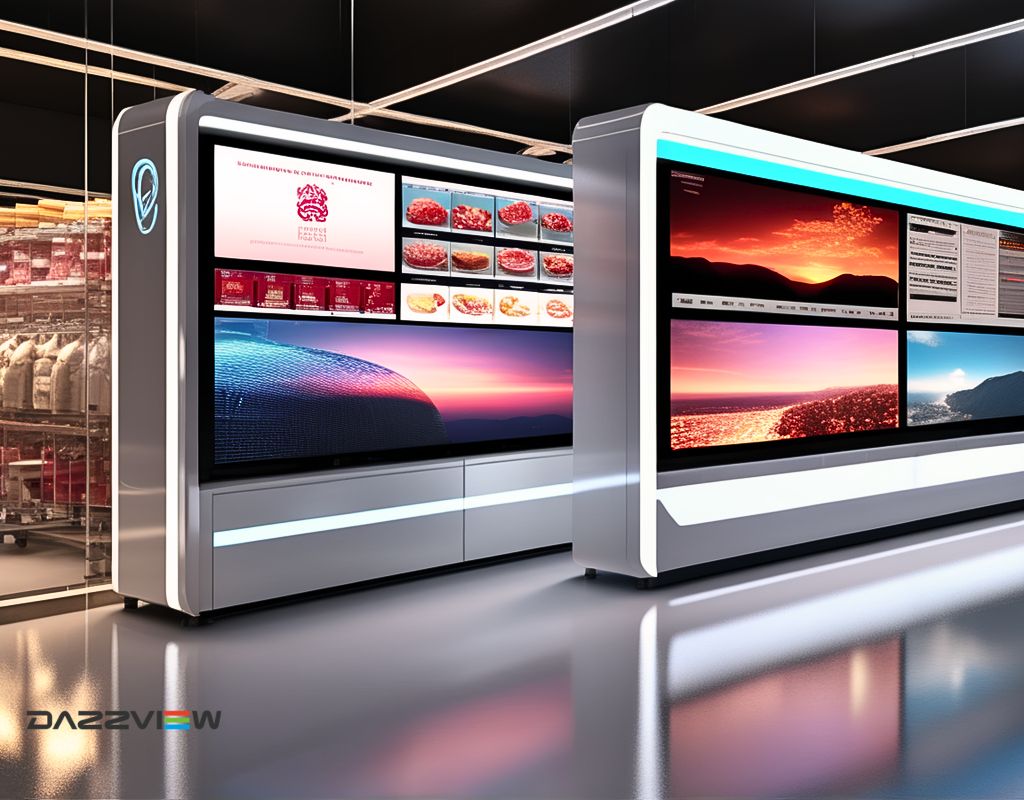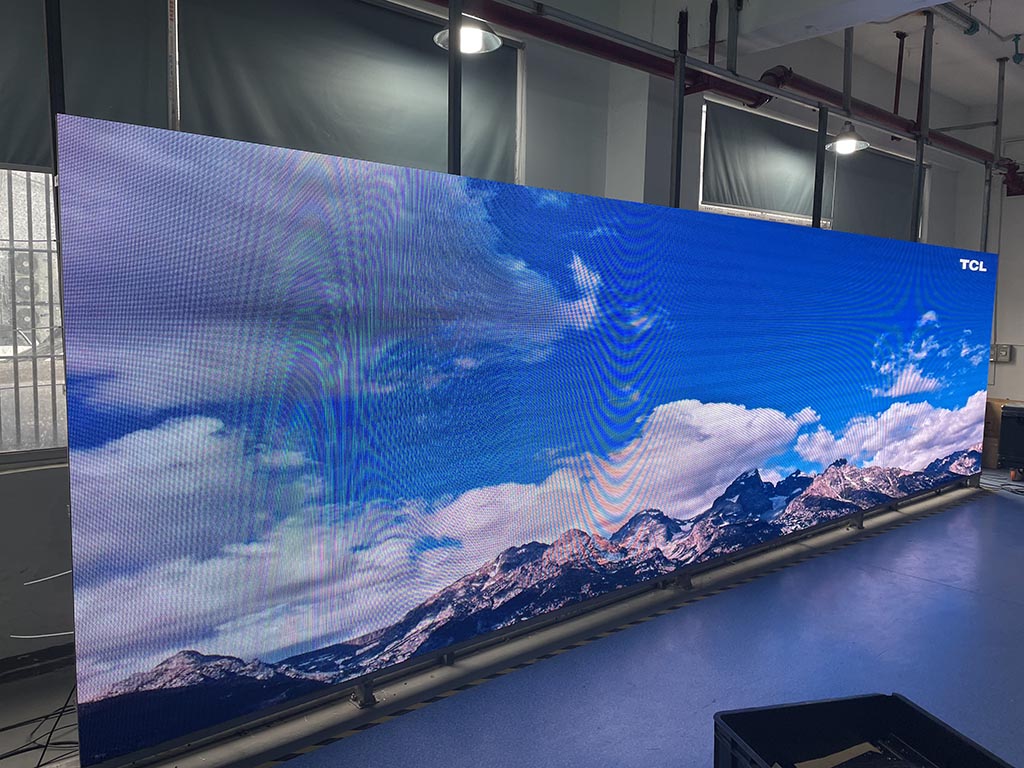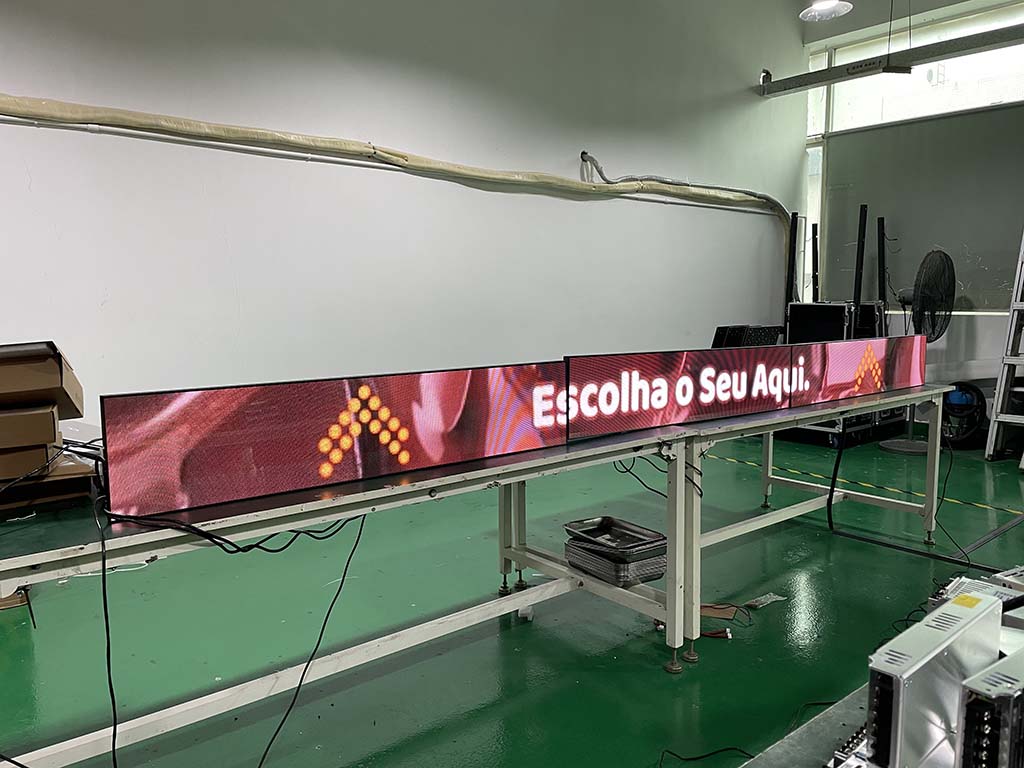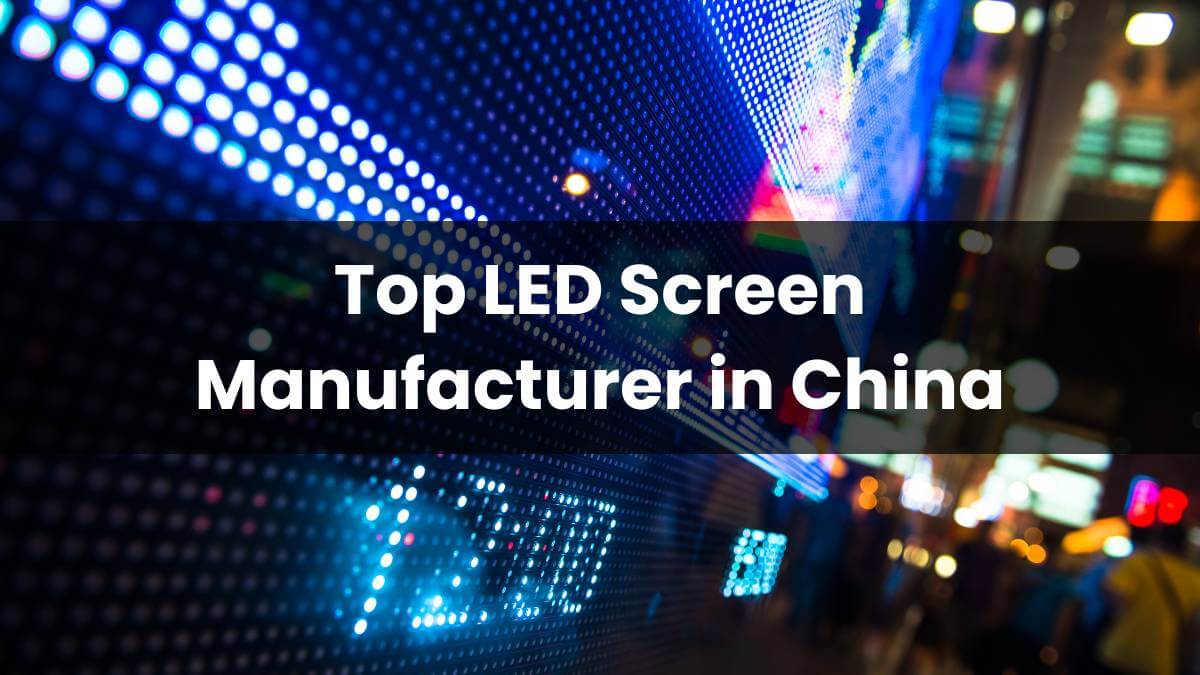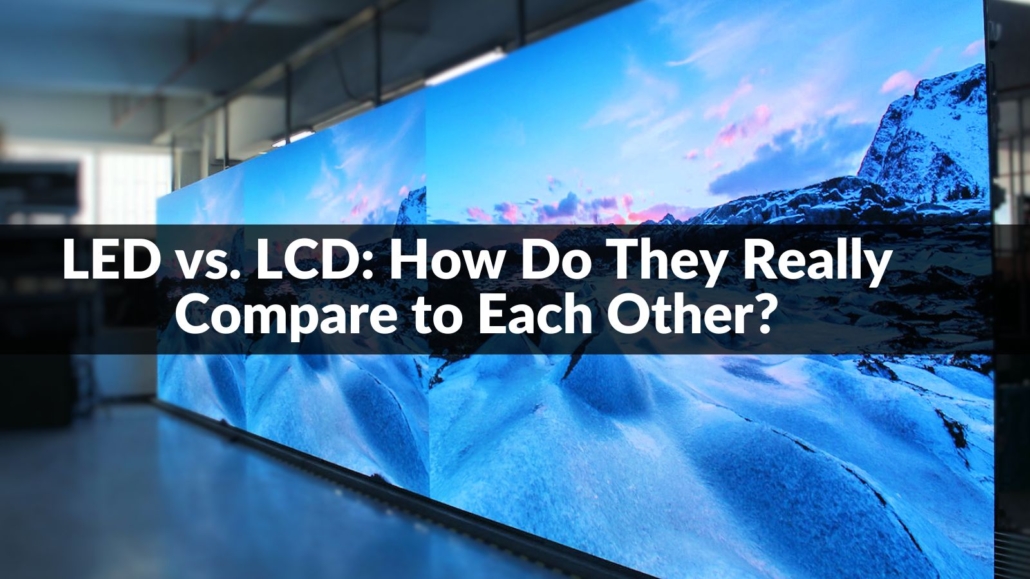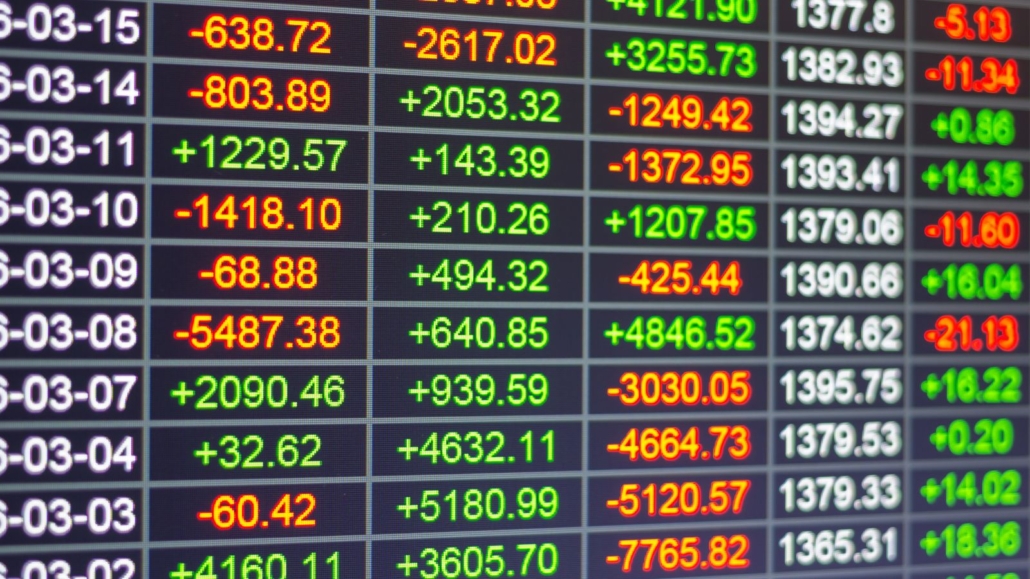LED VS LCD Screen: Difference Between LCD and LED Display
/in Academy, Blog/by administratorLED VS LCD Screen: Difference Between LCD and LED Display
In the world of digital displays, the choice between LED screen and LCD screens is pivotal, shaping how we experience visual content in various settings. Whether you're navigating the options for home entertainment, commercial advertising, or professional applications, understanding the nuances between these technologies is essential. This comprehensive guide explores the key differences, advantages, and considerations when choosing between LED and LCD screens, helping you make informed decisions that align with your specific needs.
- What is LED Technology?
- Basic Principles of LED Screens
- What is LCD Technology?
- Basic Principles of LCD Screens
- LED VS LCD Screen: What's Different
- LED vs LCD Video Wall: Which One is Better
- Factors to Consider When Choosing a Display
1. What is LED Display Technology?
LED display technology, which stands for Light Emitting Diode, is a type of flat panel display that uses an array of light-emitting diodes as pixels for a video display. Originally used in large outdoor screens and stadium displays, LED technology has evolved significantly and is now commonplace in various applications, including televisions, computer monitors, and video walls.
The primary appeal of LED displays lies in their ability to produce bright and vibrant images with excellent contrast ratios. Unlike traditional LCD displays, which rely on a backlight to illuminate the screen, LED displays generate their own light. This feature allows for deeper blacks, more vivid colors, and energy efficiency, making LED screens a preferred choice for both consumer and professional applications.
LED display technology can be broadly categorized into two types: standard LED and organic LED (OLED). Standard LEDs use inorganic materials and are known for their durability and efficiency. In contrast, OLEDs use organic compounds that emit light when electricity is applied. OLED displays offer superior color accuracy and faster response times, although they are typically more expensive to produce.
In practical terms, LED displays are renowned for their versatility. They are used in everything from digital billboards and traffic signs to home entertainment systems and mobile devices. The adaptability of LED technology allows for the creation of displays in a wide range of sizes and shapes, including flexible and transparent screens, which opens up a myriad of possibilities for innovative display solutions.
For businesses, particularly those in the B2B sector, LED displays offer significant advantages. These include lower energy consumption, longer lifespan, and the ability to operate in various environmental conditions. Industries such as retail, transportation, and hospitality leverage LED display technology to enhance customer engagement, deliver dynamic content, and improve operational efficiency.
2. Basic Principles of LED Screens
LED screens operate on a straightforward yet sophisticated principle: each pixel on the screen is a tiny light source, often referred to as a light-emitting diode (LED). These diodes are semiconductor devices that emit light when an electric current passes through them. The basic working of an LED screen involves several key components and processes.
LED Pixels and Modules
An LED screen is composed of numerous small units known as pixels. Each pixel can emit red, green, and blue light, which are the primary colors used in electronic displays. By varying the intensity of these three colors, a full spectrum of colors can be produced, enabling the screen to display images and videos with high clarity and color accuracy.
Pixels are grouped together into modules, which are the building blocks of an LED display. These modules can be assembled in various configurations to create screens of different sizes and shapes. The modular nature of LED screens allows for flexibility in design and application, from small indoor panels to massive outdoor displays.
Control System
The control system is the brain of the LED display, managing the input signal and directing how each pixel should behave to form the desired image. This system includes a controller or processor that receives video signals from a source (such as a computer, camera, or media player) and converts them into data that the LEDs can understand.
Advanced control systems also handle tasks like color correction, brightness adjustment, and synchronization across multiple modules to ensure a seamless and consistent display. The precision of the control system directly affects the quality and performance of the LED screen.
Driving Mechanism
LED displays use a driving mechanism to regulate the power supplied to each LED. This mechanism controls the current flowing through the diodes, determining their brightness. There are two primary types of driving mechanisms: constant current and constant voltage. Most modern LED displays use constant current drivers because they provide better control over brightness and reduce the risk of overheating, which can extend the lifespan of the LEDs.
Heat Management
Heat management is a critical aspect of LED display technology. LEDs generate heat when they emit light, and excessive heat can degrade their performance and lifespan. Effective heat dissipation systems, such as heat sinks and cooling fans, are integrated into LED screens to maintain optimal operating temperatures. Proper heat management ensures that the display remains bright and reliable over time.
3. What is LCD Technology?
LCD, or Liquid Crystal Display, is a widely used display technology found in various electronic devices, including televisions, computer monitors, smartphones, and digital signage. LCD technology utilizes liquid crystals combined with polarizers to produce images. These liquid crystals do not emit light themselves but manipulate light to create images on the screen.
The core component of an LCD screen is the liquid crystal layer, which is sandwiched between two layers of glass or plastic. This layer consists of rod-shaped molecules that align differently when an electric current is applied, effectively blocking or allowing light to pass through. Below this liquid crystal layer, there is a backlight, usually composed of LEDs, that provides the necessary illumination.
Structure and Working Principle
An LCD screen is structured with several key components: the backlight, the liquid crystal layer, polarizing filters, and color filters. The backlight generates white light that passes through the liquid crystals. These crystals, controlled by electric currents, twist to varying degrees to either block or allow the light through. The light then passes through a series of color filters that create the full range of colors seen on the display.
The liquid crystal molecules can be aligned in various ways to control light passage. In a twisted nematic (TN) LCD, the crystals twist 90 degrees to either block or allow light. In-plane switching (IPS) and vertical alignment (VA) are other common types of LCD technologies that improve viewing angles and color reproduction.
Advantages of LCD Technology
LCD technology offers several advantages, making it a popular choice for many applications. These benefits include:
- Energy Efficiency: LCDs are more energy-efficient compared to older display technologies like CRT (Cathode Ray Tube) because they require less power to operate.
- Image Stability: LCD screens produce stable and flicker-free images, which reduces eye strain and is suitable for extended viewing periods.
- Thin and Lightweight: The slim profile and light weight of LCD panels make them ideal for wall-mounted displays and portable devices.
- High Resolution and Color Accuracy: Modern LCDs offer high resolutions and excellent color accuracy, making them suitable for detailed and high-quality visual content.
Applications of LCD Technology
LCDs are used in a wide range of applications due to their versatility and performance. Common applications include:
- Televisions and Monitors: LCD technology is the standard for most consumer televisions and computer monitors due to its affordability and quality.
- Mobile Devices: Smartphones, tablets, and other portable devices utilize LCD screens for their lightweight and power-efficient properties.
- Digital Signage: Businesses use LCDs for digital signage solutions to display advertisements, information, and interactive content in retail, transportation, and hospitality sectors.
- Medical and Industrial Equipment: LCDs are used in various professional fields for displays that require precision and reliability.
Understanding the fundamentals of LCD technology is essential for businesses evaluating their display needs. Whether for commercial, industrial, or consumer applications, the reliable performance and versatility of LCDs make them a dependable choice in today's digital world.
4. Basic Principles of LCD Screens
Understanding the basic principles of LCD screens involves delving into how liquid crystal technology works to produce images. LCD, or Liquid Crystal Display, technology relies on the unique properties of liquid crystals and the manipulation of light to display visuals. This process involves several key components and mechanisms.
Liquid Crystals and Light Manipulation
At the heart of LCD technology are liquid crystals, which are materials that exhibit properties between those of conventional liquids and solid crystals. These crystals can change their orientation when an electric current is applied. In an LCD screen, liquid crystals are sandwiched between two polarizing filters and glass substrates. When electric currents pass through the liquid crystals, they twist or align in ways that either block or allow light to pass through.
The backlight behind the liquid crystal layer emits light that passes through the first polarizing filter. The liquid crystals then manipulate this light based on the electric signals they receive. Depending on their orientation, the crystals allow varying amounts of light to pass through the second polarizing filter, creating the desired image on the screen.
Color Filters
To produce full-color images, LCD screens use color filters. Each pixel on an LCD screen is divided into subpixels, typically red, green, and blue (RGB). By controlling the amount of light passing through each subpixel with the liquid crystals, the screen can produce a wide range of colors. The combination of light from the RGB subpixels creates the overall color seen by the viewer.
Pixel Control and Resolution
The resolution of an LCD screen is determined by the number of pixels it contains. Each pixel's brightness and color are controlled individually by adjusting the electric current passing through its liquid crystal layer. Higher resolution screens have more pixels, allowing for finer detail and sharper images. The precise control of each pixel's light output is what enables LCD screens to display high-quality images and videos.
Backlighting
The backlighting system is crucial for LCD operation as liquid crystals do not emit light themselves. Modern LCDs primarily use LED backlights due to their efficiency and brightness. The backlight illuminates the liquid crystal layer, and its intensity can be adjusted to control the overall brightness of the screen. Advanced backlighting technologies, such as local dimming, enhance contrast by adjusting the brightness in specific screen areas, providing deeper blacks and more vivid colors.
Driving Electronics
The driving electronics in an LCD screen include the circuitry that supplies the necessary voltages to the liquid crystals. This circuitry is responsible for the precise timing and control of the electric currents that determine the orientation of the liquid crystals. Accurate driving electronics are essential for maintaining image quality, reducing motion blur, and ensuring the screen's responsiveness to input signals.
5. LED VS LCD Screen: What's Different
When comparing LED and LCD screens, it's essential to understand their distinct differences. Although both technologies fall under the umbrella of flat-panel displays, their performance varies across several key aspects, including brightness, contrast, color accuracy, viewing angles, response time, energy efficiency, practical applications, and maintenance costs. Let's delve into these differences to help you make an informed decision.
Brightness and Contrast
Brightness is a crucial factor in display performance, especially in well-lit environments. LED screens generally offer higher brightness levels compared to LCD screens because of their use of light-emitting diodes. This increased brightness makes LEDs more suitable for outdoor displays and areas with high ambient light. In contrast, LCD screens rely on a backlight system, which can limit their maximum brightness.
Contrast refers to the difference between the darkest blacks and the brightest whites a screen can display. LED displays, especially OLED (Organic Light-Emitting Diode) variants, excel in providing high contrast ratios. This is because LEDs can turn individual pixels on and off, achieving true blacks. LCD screens, on the other hand, struggle with this due to their backlight, which can lead to light leakage and less accurate blacks.
Color Accuracy and Reproduction
Color accuracy and reproduction are vital for applications where precise color representation is critical, such as graphic design and professional video editing. LED screens, particularly those with advanced technologies like QLED (Quantum Dot LED), tend to offer superior color accuracy and a broader color gamut compared to traditional LCDs. This means LED displays can produce more vibrant and lifelike colors.
LCD screens can also provide good color accuracy, especially IPS (In-Plane Switching) panels. However, they may fall short of the color richness and depth seen in high-end LED displays. The type of backlight and color filters used in LCDs can affect their color performance, sometimes resulting in less dynamic colors.
Viewing Angles
Viewing angles determine how well a screen maintains image quality when viewed from different positions. LED screens, especially OLEDs, offer excellent viewing angles, maintaining consistent colors and brightness even when viewed from the sides. This makes them ideal for collaborative environments where multiple viewers need to see the screen clearly.
In contrast, LCD screens, particularly TN (Twisted Nematic) panels, have more limited viewing angles. Colors and contrast can shift noticeably when viewed from angles other than straight on. IPS LCDs improve on this, offering wider viewing angles, but still may not match the performance of OLED screens.
Response Time and Refresh Rates
Response time is the speed at which a display can change from one color to another, impacting motion clarity. LED screens, particularly those designed for gaming, often have faster response times than LCDs. This reduces motion blur and ghosting in fast-paced scenes, making LEDs preferable for gaming and high-speed video content.
Refresh rates refer to how many times per second the display updates its image, measured in Hertz (Hz). LED screens can achieve high refresh rates (120Hz, 144Hz, or higher), offering smoother visuals and improved performance in dynamic content. While LCD screens can also support high refresh rates, TN panels tend to perform better than IPS panels in this regard, though they may still not match the top-tier LEDs.
Energy Efficiency and Lifespan
Energy efficiency is a consideration for both cost and environmental impact. LED screens are generally more energy-efficient than LCD screens. This is because LEDs can selectively illuminate parts of the screen as needed, while LCDs require constant backlighting. OLED displays are particularly efficient since they can completely turn off pixels to display black, consuming less power.
Lifespan is another important factor. Traditional LEDs have a longer lifespan than LCDs due to the durable nature of LED technology. However, OLED screens may have shorter lifespans due to potential issues like burn-in, where static images can leave permanent marks on the screen over time. LCDs, particularly those with LED backlighting, offer good longevity but may require backlight replacements eventually.
Practical Applications
The practical applications of LED and LCD screens vary widely, depending on their strengths and weaknesses. Below are some key areas where each technology excels.
Usage in Consumer Electronics
LED screens, particularly OLEDs, are prevalent in high-end consumer electronics, including smartphones, tablets, and televisions. Their superior color accuracy, contrast, and viewing angles make them ideal for media consumption and gaming. LCDs, particularly IPS variants, are also common in consumer electronics, valued for their color accuracy and wide viewing angles in devices like monitors and budget TVs.
Commercial and Professional Uses
In commercial and professional settings, LED displays are favored for digital signage, advertising, and large video walls due to their brightness, durability, and visibility in various lighting conditions. LCDs, especially those with IPS technology, are widely used in office environments, design studios, and other professional settings where color accuracy and consistency are crucial.
Gaming and Entertainment
Gaming and entertainment demand displays with fast response times, high refresh rates, and vibrant colors. LED screens, particularly those designed for gaming, deliver on these fronts, providing immersive experiences with minimal lag and stunning visuals. LCDs, especially high-refresh-rate TN panels, are also popular in gaming due to their affordability and performance.
Maintenance and Long-term Costs
Maintenance and long-term costs are important considerations when choosing between LED and LCD screens. LED displays generally require less maintenance due to their robust construction and longer lifespan. OLEDs may need more care to prevent burn-in, especially in static-use cases.
LCDs can have higher maintenance costs over time, particularly if backlight replacements are needed. However, they tend to be more affordable upfront compared to high-end LED displays. When evaluating long-term costs, it's essential to consider both the initial investment and the ongoing maintenance expenses.
6. LED vs LCD Video Wall: Which One is Better?
When it comes to selecting the best technology for video walls, the decision between LED and LCD can be crucial for ensuring the right fit for your needs. Both technologies have unique strengths and applications, and understanding these can help you make an informed choice. Here, we'll explore various aspects to determine which technology stands out in different scenarios.
Brightness and Visibility
LED video walls offer superior brightness levels, making them ideal for environments with high ambient light or for outdoor applications. LEDs can achieve brightness levels that far surpass those of LCD screens, ensuring visibility even under direct sunlight. This makes LED video walls the preferred choice for advertising displays, stadiums, and other outdoor venues.
LCD video walls, while capable of high brightness, generally cannot match the peak levels of LEDs. However, they still perform exceptionally well in controlled indoor environments such as conference rooms, retail spaces, and control centers. LCDs with high-brightness backlighting can also be used in semi-outdoor environments where direct sunlight is less intense.
Image Quality and Resolution
Image quality and resolution are critical factors in video wall performance. LED video walls, especially those utilizing fine-pitch LEDs, offer excellent image quality with high resolution. They are capable of displaying vibrant colors and deep blacks, resulting in stunning visual experiences. The modular nature of LED panels also allows for seamless scalability, making them suitable for large video walls with high resolution.
LCD video walls typically offer higher pixel density than LED panels, which translates to finer details and sharper images. This makes LCDs particularly well-suited for applications that require close-up viewing, such as retail displays, control rooms, and corporate environments. The gap between individual LCD panels (bezels) can sometimes disrupt the seamless visual experience, but modern ultra-narrow bezel designs have minimized this issue significantly.
Color Accuracy and Consistency
Color accuracy is paramount in applications where precise color representation is critical. LED video walls, particularly those using advanced technologies like microLED, can deliver exceptional color accuracy and consistency across the display. This makes LEDs a great choice for broadcast studios, high-end retail, and any application demanding true-to-life colors.
LCD video walls, especially those with IPS panels, also provide excellent color accuracy and wide viewing angles. This ensures that colors remain consistent even when viewed from different angles, which is essential in collaborative environments and public display settings. The color performance of LCDs makes them suitable for professional applications such as video editing, medical imaging, and design.
Durability and Maintenance
Durability and maintenance are key considerations for long-term investment in video walls. LED video walls are known for their robustness and longevity. LEDs have a long operational life, and their modular design allows for easy maintenance and replacement of individual panels without significant downtime. This makes LEDs highly reliable for continuous use in demanding environments.
LCD video walls also offer good durability but may require more frequent maintenance, particularly in high-usage scenarios. The backlighting system in LCDs can degrade over time, leading to reduced brightness and color consistency. However, advancements in LCD technology have improved their lifespan and reduced maintenance needs, making them a viable option for many applications.
Cost Considerations
Cost is often a deciding factor in the choice between LED and LCD video walls. LED video walls generally have a higher initial cost due to the advanced technology and materials used. However, their long lifespan, low maintenance requirements, and superior performance in various conditions can justify the investment for many users.
LCD video walls tend to be more cost-effective upfront. They provide excellent performance at a lower initial cost, making them accessible for businesses with budget constraints. The total cost of ownership for LCDs can be higher over time due to potential maintenance and replacement of backlights, but they remain a popular choice for indoor applications where budget is a significant consideration.
Conclusion: Which is Better?
The choice between LED and LCD video walls ultimately depends on the specific requirements of the application. LED video walls excel in brightness, contrast, and durability, making them ideal for high-impact, outdoor, and large-scale installations. Their ability to deliver vivid colors and seamless visuals also makes them a top choice for premium indoor displays.
LCD video walls, on the other hand, offer higher resolution and cost-efficiency, making them suitable for detailed, close-up viewing in controlled indoor environments. Their color accuracy and consistent performance are valuable in professional and commercial settings where budget constraints are a concern.
7. Factors to Consider When Choosing a Display
Selecting the right display technology involves evaluating several critical factors to ensure it meets your specific needs and delivers optimal performance. Whether you are deciding between LED and LCD screens or considering other types of displays, these factors play a crucial role in making an informed decision.
Application and Use Case: The intended application and use case are fundamental in determining the suitable display technology. Consider where and how the display will be used—whether it’s for indoor or outdoor environments, commercial advertising, professional presentations, gaming, or healthcare. Each setting may demand specific features, such as brightness, resolution, and durability, to achieve optimal results.
Environment and Lighting Conditions: The installation environment and surrounding lighting conditions significantly influence display performance. LED displays excel in high-brightness environments and are ideal for outdoor installations, particularly in areas exposed to direct sunlight. On the other hand, LCD screens, especially those with high-brightness backlighting, perform effectively in controlled indoor settings with moderate ambient light levels.
Image Quality Requirements: For applications that require high-resolution visuals, accurate color reproduction, and consistent image quality, image quality is a key consideration. LED screens often deliver vibrant colors, deep contrast, and excellent brightness, while LCD screens, particularly those equipped with IPS panels, provide wide viewing angles and consistent color performance. Choosing the right option depends on the visual demands of your application.
Budget and Total Cost of Ownership: Budget constraints play a significant role in selecting between LED and LCD displays. LED screens typically have a higher initial cost but offer long-term savings due to their durability, energy efficiency, and minimal maintenance needs. LCD screens, while more affordable upfront, may involve higher operational costs over time, especially in settings where frequent backlight replacements are necessary.
Maintenance and Lifespan: Maintenance requirements and lifespan are also critical factors. LED displays are known for their durability and long operational life. Their modular design allows for easy maintenance and the replacement of individual panels. In contrast, LCD screens may require periodic backlight replacements and can have a shorter lifespan, depending on usage conditions and environmental factors.
Scalability and Flexibility: For installations that require large display areas, scalability and flexibility are crucial. LED screens are highly scalable, thanks to their modular construction, which enables seamless expansion or reconfiguration of video walls. LCD screens with ultra-narrow bezels also support scalability, allowing the creation of near-seamless displays, although the bezel gaps may slightly affect visual continuity.
Brand Reputation and Support: Lastly, the reputation of the display manufacturer and the support they provide are important considerations. Choosing a reputable brand ensures product quality and reliable customer service. Look for manufacturers offering comprehensive warranty coverage, technical support, and readily available spare parts, especially for critical installations and long-term projects.
By thoroughly evaluating these factors, you can select a display technology that aligns with your specific requirements and delivers exceptional performance in your intended application.
Choosing the Best Display for Your Needs
In conclusion, the decision between LED and LCD screens hinges on several factors including brightness, image quality, durability, and cost-effectiveness. For superior performance and innovation in LED display technology, consider Dazzview. As a leading manufacturer, Dazzview offers cutting-edge solutions tailored to meet diverse consumer and professional needs. Explore their range of products, including advanced LED video walls, by visiting Dazzview's product page. Make your display choice today and elevate your visual experiences with the best technology available.Please contact us now for more quotes!
Read More:
 Jay
Jay
 Niki
Niki
 Selena
Selena

